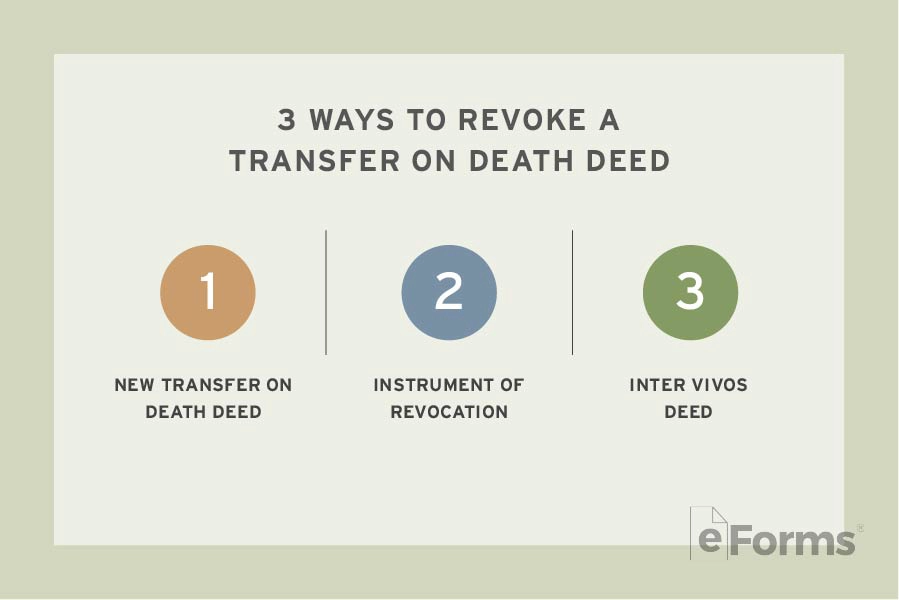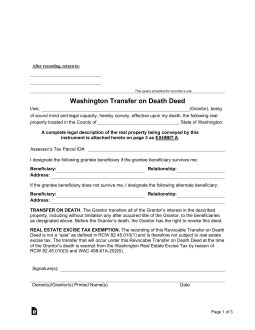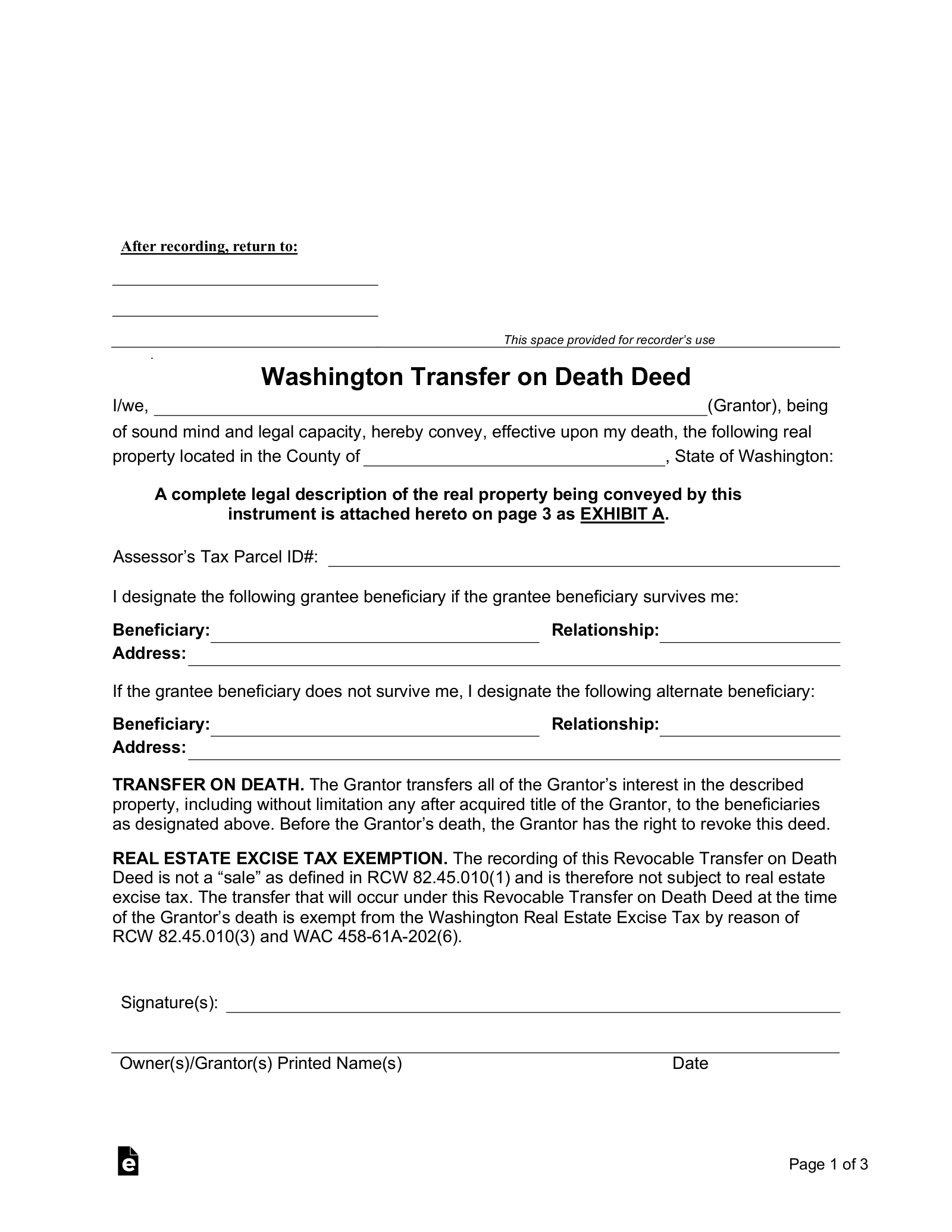Updated April 12, 2024
A Washington transfer on death deed is a legal document that allows the owner of real property to set up a transfer of their ownership to a designated beneficiary for when they die. A much simpler process than going through probate court, a transfer on death deed can be revoked or changed at any time before the transferor’s death.
Table of Contents |
Requirements
- Notary: Required.[1]
- Witnesses: Not required
- Recording: Must be recorded before the transferor’s death in the public records in the office of the auditor of the county where the property is located.[2]
Legal Description
This is a required section in a transfer on death deed. Using the Public Land Survey System (PLSS), which divides land into townships, ranges, and sections, a legal description of real property provides its precise location for the public record.
A legal description of real property can be found on the property’s deed or in the public records of the county auditor’s office local to the property.
Example
“The Northeast Quarter of the Southwest Quarter (NE 1/4 of SW 1/4) of Section Thirteen (13), Township Fourteen (14) North, Range Fifteen (15) East of the Willamette Meridian, Yakima County, Washington.”
Revocation

Once recorded, a transfer on death deed can be revoked at any time during the transferor’s lifetime. To do so, one of the following documents can be used:[3]
- A transfer on death deed that revokes the deed or part of the deed expressly or by inconsistency
- An instrument of revocation that expressly revokes the deed or part of the deed
- An inter vivos deed that expressly revokes the transfer on death deed or part of the deed
For the revocation to be effective, it must be acknowledged and recorded by the transferor before their death in the public records via the county auditor’s office of the county where the property is located.
How to Record
A transfer on death deed must be recorded prior to the transferor’s death. Complete and acknowledge the form, and take it to the county auditor’s office in the county where the property is located. Follow the instructions provided by the auditor to get the transfer on death deed officially recorded in the public records. Filing fees vary by county.


